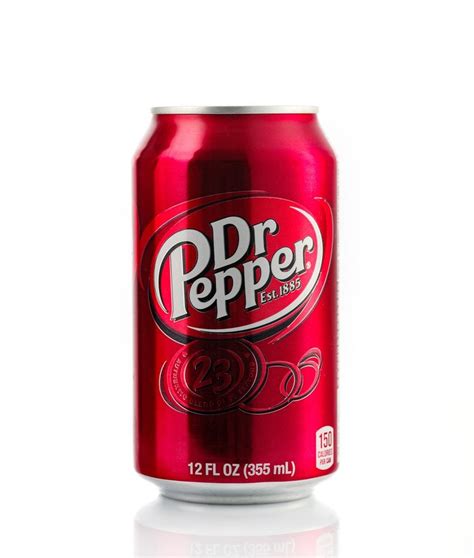In recent food and beverage industry reports, Dr Pepper has remarkably joined Pepsi to become one of the nation’s second-best-selling sodas, trailing only behind category giant Coca-Cola. This rise to near parity with Pepsi, a notable titan in the soda world, has spurred a mix of curiosity and admiration among consumers and industry analysts. What is it about Dr Pepper’s blend that has drawn such a massive following, pushing it ahead in the competitive soft drink market? The answer lies in its complex and mysterious flavor profile, as well as its ability to evoke nostalgia and curiosity among its fans.
Dr Pepper’s elusive flavor profile, rumored to include 23 distinct flavors, has led to countless debates and taste tests. Some enthusiasts point out the prominent notes of cherry and vanilla, while others talk about hints of almond, plum, or even the bite of cinnamon baking spice. Interestingly, Dr Pepper lovers have gone so far as to use mass spectrometry to demystify its composition. One such video on YouTube breaks down its chemistry, providing an insightful view into what makes Dr Pepper taste the way it does. You can delve into the specifics through this video. This combination of flavors, hidden under the guise of ‘natural flavors’ on its ingredient list, fuels both fascination and brand loyalty.
In an era where artificial and high fructose corn syrup in sodas are often criticized, Dr Pepper’s real sugar versions evoke a sense of nostalgia and purity for many. Previously, the famous Dublin Dr Pepper, produced with cane sugar, had a cult following until its discontinuation by Snapple Group sparked outrage among die-hard fans. This move was seen by some as a corporatized attempt to muzzle a beloved niche product, much to the dismay of its loyal consumers. Check out the Dublin Dr Pepper link for more details. The mix of sweeteners and the debate between high fructose corn syrup versus sugar continues to influence consumer preferences significantly.
Comparing Dr Pepper to Pepsi leads us into the broader discourse on the regional and cultural variances in soft drink consumption. In the Midwest United States, for example, people commonly refer to soda as ‘pop’, while in the South, any carbonated drink is often simply called a ‘coke’. This regional dialect plays into branding and market strategies, but it also showcases the deep-rooted cultural associations individuals have with these beverages. Soda naming conventions and preferences reveal much about local tastes and traditions, which companies leverage to market their products regionally.
Consumer testimonials on social platforms shed fascinating light on personal anecdotes and preferences around Dr Pepper. One user recalled their unique Christmas tradition of treating themselves to their favorite sodas, indicating the beverage’s personal sentimental value. Another user shared the amusing yet telling anecdote of mixing cherry medicine syrup with Pepsi as a child, which influenced their taste perceptions of Dr Pepper in adulthood. These individual stories underscore how personal and varied the connections people have with their favorite sodas, contributing to their distinct market appeal.
The world of soda production also reveals a complex interplay of logistics and localized production. Dr Pepper, like other sodas, is typically produced and bottled regionally to ensure freshness and reduce transportation costs. The concentrate, retaining its secret formula, is shipped to various bottlers where water and carbonation are added. This methodology allows the brand to maintain its signature taste across different regions while adapting to logistical constraints. This breakdown of the production process shows the careful balance between preserving brand integrity and meeting practical supply chain needs.
Innovation in product offerings has also been instrumental in maintaining Dr Pepper’s market edge. The introduction of variants like Dr Pepper Cream Soda and Zero Sugar lines taps into the evolving consumer tastes for less sugar-laden and more sophisticated flavors. Diet versions have garnered a significant fan base, often praised for closely matching the original’s taste profile. These diversified product lines cater to different market segments, ensuring that Dr Pepper remains a constant presence in the rapidly shifting beverage landscape. As soda consumption trends evolve, Dr Pepper’s ability to innovate and respond to consumer desires solidifies its position as an iconic American beverage.


Leave a Reply